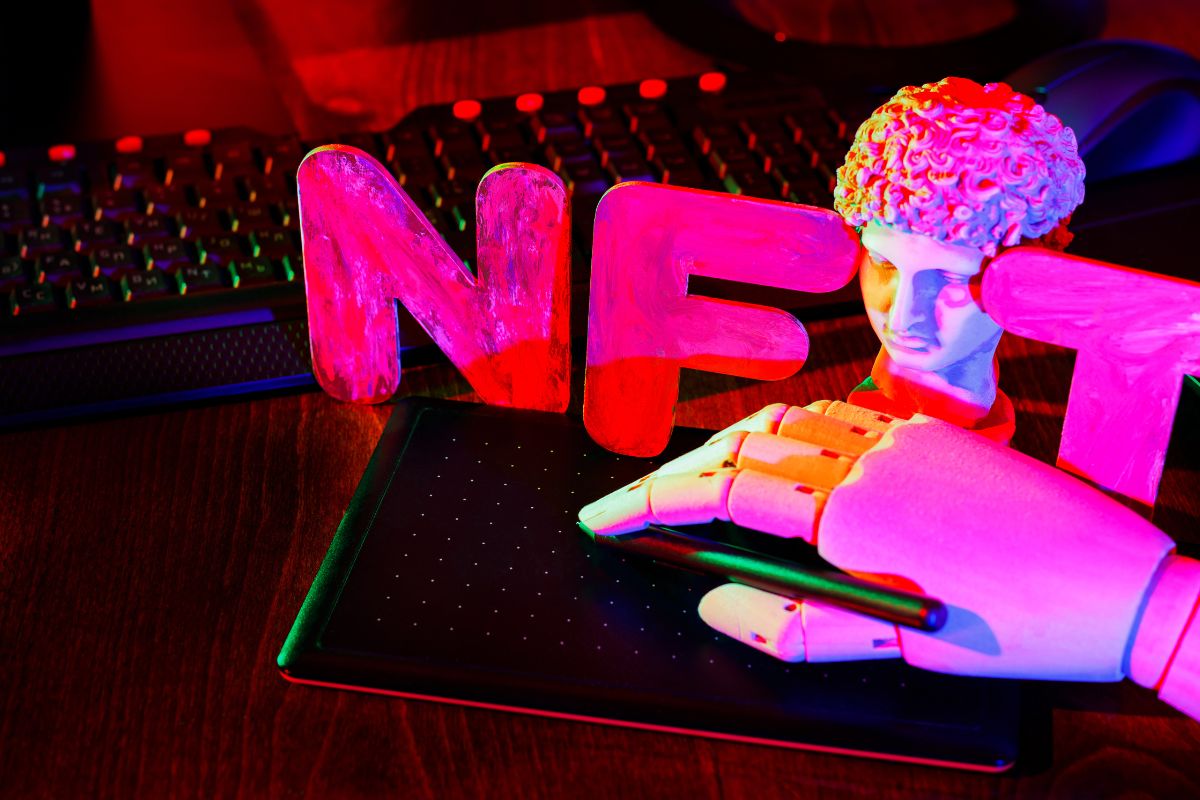Do you know what an NFT Whitelist is and what exactly it means? You might not know, or you might be wondering if you can get on an NFT project’s whitelist.

The fact that there are articles on this means that you are not the only one asking those questions, since by now, most of the people occupying themselves with NFTS know how advantageous it can be to get on an NFT whitelist.
In case you are worried about your low number of followers on social media, don’t fret about it; you don’t have to be big on Instagram to get first dibs on investment options.
This article will inform you about what an NFT whitelist is, what it involves, and the ways you can get into an NFT whitelist.
What Is An NFT Whitelist?
To put it simply, once your wallet address is added to an NFT’s whitelist, you have been automatically included in a list of people who have unique minting privileges.
This usually ensures that you can mint one or more NFTs well before its official launching day and at a lower cost.
The time window can range, but it is generally between 24 to 48 hours before the NFT project’s official general sale begins.
So, basically what whitelisting does is enable an NFT project to give its community the chance to mint and sell NFTs before they are released to the public.
Why Do NFT Whitelists Exist?
NFT whitelisting is used by projects for 3 reasons: to remunerate early backers, to help stop gas wars, and to protect against spam.
As A Reward For Early Backers
The whitelist allows a smaller subset of the community to gain early access to an NFT launch.
Several initiatives may give out free NFTs and unique opportunities to those who enter their whitelist, whereas others give out early bird entries with a discount.
However, it is totally up to each one of the projects to decide how they will reward their early backers.
How you will get whitelisted differs from one NFT project to the other. One might ask for a series of tasks to be done or a threshold wallet hold of the asset for that specific project.
As we said, there are no standard processes to get whitelisted. In fact, there are projects that could get you pre-approved if you simply engage daily in community activities and convos, with no official application required on your behalf.
To Keep Gas Wars At Bay
Because general (or public) NFT sales do not involve whitelists, multiple users engaging with the smart contract at the same time will cause transaction fees to skyrocket.
This happens when consumers start competing to have their minting operations authorized first, pushing up gas prices and resulting in “gas wars.”
In comparison, getting whitelisted means that only a limited amount of wallet addresses can mint the NFT (see also ‘What Does Mint Mean In NFT?‘) prior to the general sale, reducing the likelihood of gas wars.
A further successful strategy for a whitelist to avoid gas problems is to set a time window in which an NFT is accessible for minting.
It is important to note that the gas price will differ based on the network congestion of the blockchains that host the NFTs.
At times, a whitelist’s sales can be influenced by other minting sales or external factors.
A beneficial aspect of NFT whitelists is that when there are many people wishing to be whitelisted, it generates media hysteria and fanfare around the official launch, the NFT itself, as well as any possible future NFTs.
To Reduce Spam Accounts
An NFT project can help stop the spamming of non-whitelisted addresses by forming whitelisted subscribers.
Furthermore, the whitelisting system can ensure that spam accounts are not permitted.
Stopping spam accounts from gaining access to presales is vital because it can mitigate the performance of the network and raise customers’ gas fees.
How Can I Get On An NFT Whitelist?

To get on the whitelist of an NFT to the whitelist, you need to meet some of the criteria established by the founders of the project or complete some tasks they give to their community in order to let people in the whitelist.
1. Track Down Projects Before They’ve Made Their Debut
The NFT market is teeming with new initiatives vying for new customers. Before their actual initial release, such novel NFT initiatives could provide whitelist spaces.
If you enjoy discovering great opportunities and experimenting with new product offerings, this is the way to get whitelisted.
Yet, you should take into account the risk you’re taking when it comes to new projects that have to convince people of their worth. Because of the prevalence of NFT scams, it is always advisable to thoroughly check a project’s details and whitepaper prior to getting whitelisted for a project.
2. Engage In Discord Communities
After you’ve completed your research and chosen a project, you must find the community by joining a project’s chatroom.
Discord is the primary communication channel for an NFT project.
Although each Discord community is different, info about the whitelist’s process is usually published on the Announcements channel.
If there isn’t anything useful there, look into the rest of the NFT’s channels. You could easily fail to notice the whitelist deadline or the project doesn’t have one.
3. Request To Be Whitelisted
Applying to get whitelisted is another way to get you on a project’s whitelist.
After checking that you meet the whitelist’s requirements or have completed all the tasks, you can enter the whitelisting process and wait to see if you will enter the whitelist too.
Whitelist applications can range from completing a simple Google Form to being an active referrer of their project.
In some cases, a lottery system is used in the whitelisting process. Each project is distinct, with its own set of rules governing the whitelisting process.
The Bottom Line
Getting whitelisted is very beneficial for you if you want to gain early access to an NFT and avoid any gas wars.
However, as there is no guarantee that you will actually get whitelisted, the only thing you can do is make sure that you follow the steps above.
- How to secure crypto accounts the simple and safe way? - December 24, 2025
- Best crypto apps for beginners in 2026 - December 24, 2025
- Crypto volatility explained: why prices move so fast? - December 24, 2025

